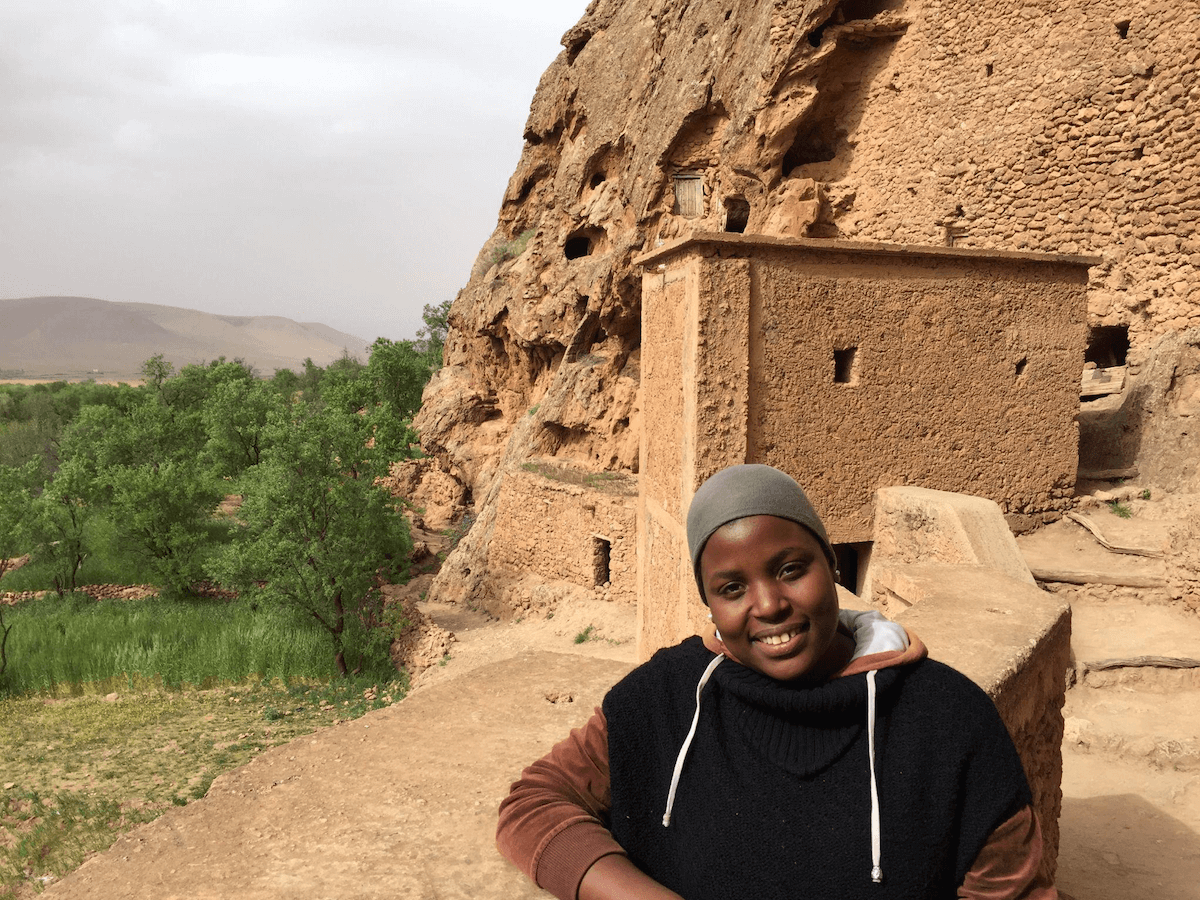Najima Ali hails from the city of Tan-Tan in the Moroccan Sahara, and operates a guest house in the village of Ifri Imadidan. A young woman with great ambition and a deep awareness of the threats posed to the Collective Granaries without proper conservation work, Najima eloquently sums up the importance of cultural heritage preservation in one sentence: “The collective granary is similar to a bridge that connects us to our ancestors…they left their traces there.”

“I feel my ancestors’ presence here.” -Najima Ali at the Collective Granaries in Morocco. (Photo by Nada Hosking)
For people like Najima, the need to adapt to a rapidly changing climate isn’t an abstract concept to only be discussed in intergovernmental panels. For her and the many like her around the world, the threat of climate change hits very close to home.
COP26 and Cultural Heritage Preservation
Over the past two weeks, representatives from countries around the world congregated at the COP26 conference to address one of the world’s most immediate and urgent issues: the climate crisis. But, the climate crisis is a multifaceted issue encompassing economic and social justice as well as direct interventions to protect the climate. Indeed, the second goal set at COP26 is “Adapt to protect communities and natural habitats.” The focus on local communities and their built heritage is apt.
The 2021 Intergovernmental Panel on Climate Change released a report earlier this year stating that, at the current rate, sea level rise will be irreversible for hundreds to thousands of years. Exclaiming a “code red for humanity,” the report speaks to the immediate threat climate change poses for heritage sites around the world: the danger of being damaged or lost forever.
This threat is not breaking news. For years, Global Heritage Fund has sounded the clarion call for the intersection of cultural heritage preservation and climate change. We have always believed that reducing the building industry’s environmental impact by tapping into the wisdom of ancient and indigenous building practices can provide time-tested strategies to address the climate crisis. Recognizing the direct impact of climate change on the sites and communities where we work, we have promoted climate resiliency as an integral part of our mission. By advocating for the adaptability of people and heritage, COP26 has come to endorse the animating principle of our organization: Cultural heritage preservation helps people adapt to their changing environments in innovative and sustainable ways.
The Collective Granaries are directly threatened by climate change and rural to urban migration, issues that feed into the broader development framework, including the Sustainable Development Goals. But, this problem is not specific to Morocco—it is global. With the deadline of the 2030 SDGs fast approaching, it is imperative that we use cultural heritage preservation not just as a means to achieving this larger development agenda, but as an end.
Meeting the Present Moment
Culture-centered interventions allow for creative and innovative solutions that have direct impact on the development of local communities. When cultural heritage is preserved and prioritized, local economies grow, women find their voices, and climate change is addressed. This is evident in the work GHF has undertaken at the Collective Granaries in Morocco, a newly nominated site for the UNESCO World Heritage List, as well as in our other projects around the world.
Cultural heritage is adaptable. The approaches we use to preserve it move forward alongside the modern world. Institutions and individuals who tirelessly work to maintain the heritage that binds us together as humans have a responsibility to push our work beyond the sites. It is our duty to be forward-thinkers who use the current moment to influence how we approach the future while preserving our past.

